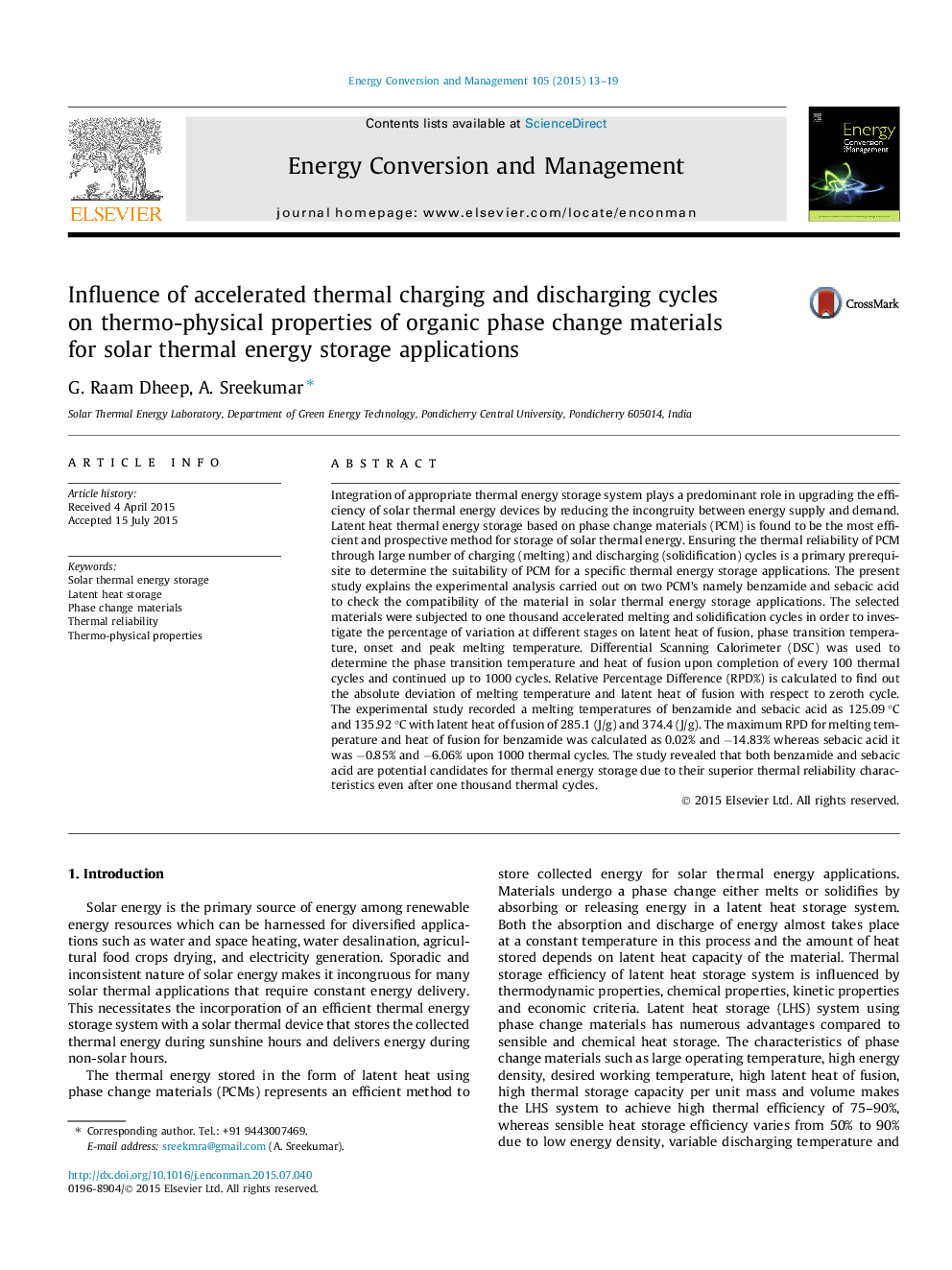| کد مقاله | کد نشریه | سال انتشار | مقاله انگلیسی | نسخه تمام متن |
|---|---|---|---|---|
| 7162005 | 1462857 | 2015 | 7 صفحه PDF | دانلود رایگان |
عنوان انگلیسی مقاله ISI
Influence of accelerated thermal charging and discharging cycles on thermo-physical properties of organic phase change materials for solar thermal energy storage applications
ترجمه فارسی عنوان
تأثیر شارژ شار حرارتی و چرخه تخلیه بر خواص حرارتی فیزیکی مواد تغییر فاز آلی برای کاربردهای ذخیره انرژی حرارتی خورشیدی
دانلود مقاله + سفارش ترجمه
دانلود مقاله ISI انگلیسی
رایگان برای ایرانیان
کلمات کلیدی
ذخیره انرژی گرمایی خورشیدی، ذخیره سازی گرمایی خنثی، مواد تغییر فاز، قابلیت اطمینان حرارتی، خواص حرارتی فیزیکی،
موضوعات مرتبط
مهندسی و علوم پایه
مهندسی انرژی
انرژی (عمومی)
چکیده انگلیسی
Integration of appropriate thermal energy storage system plays a predominant role in upgrading the efficiency of solar thermal energy devices by reducing the incongruity between energy supply and demand. Latent heat thermal energy storage based on phase change materials (PCM) is found to be the most efficient and prospective method for storage of solar thermal energy. Ensuring the thermal reliability of PCM through large number of charging (melting) and discharging (solidification) cycles is a primary prerequisite to determine the suitability of PCM for a specific thermal energy storage applications. The present study explains the experimental analysis carried out on two PCM's namely benzamide and sebacic acid to check the compatibility of the material in solar thermal energy storage applications. The selected materials were subjected to one thousand accelerated melting and solidification cycles in order to investigate the percentage of variation at different stages on latent heat of fusion, phase transition temperature, onset and peak melting temperature. Differential Scanning Calorimeter (DSC) was used to determine the phase transition temperature and heat of fusion upon completion of every 100 thermal cycles and continued up to 1000 cycles. Relative Percentage Difference (RPD%) is calculated to find out the absolute deviation of melting temperature and latent heat of fusion with respect to zeroth cycle. The experimental study recorded a melting temperatures of benzamide and sebacic acid as 125.09 °C and 135.92 °C with latent heat of fusion of 285.1 (J/g) and 374.4 (J/g). The maximum RPD for melting temperature and heat of fusion for benzamide was calculated as 0.02% and â14.83% whereas sebacic acid it was â0.85% and â6.06% upon 1000 thermal cycles. The study revealed that both benzamide and sebacic acid are potential candidates for thermal energy storage due to their superior thermal reliability characteristics even after one thousand thermal cycles.
ناشر
Database: Elsevier - ScienceDirect (ساینس دایرکت)
Journal: Energy Conversion and Management - Volume 105, 15 November 2015, Pages 13-19
Journal: Energy Conversion and Management - Volume 105, 15 November 2015, Pages 13-19
نویسندگان
G. Raam Dheep, A. Sreekumar,
